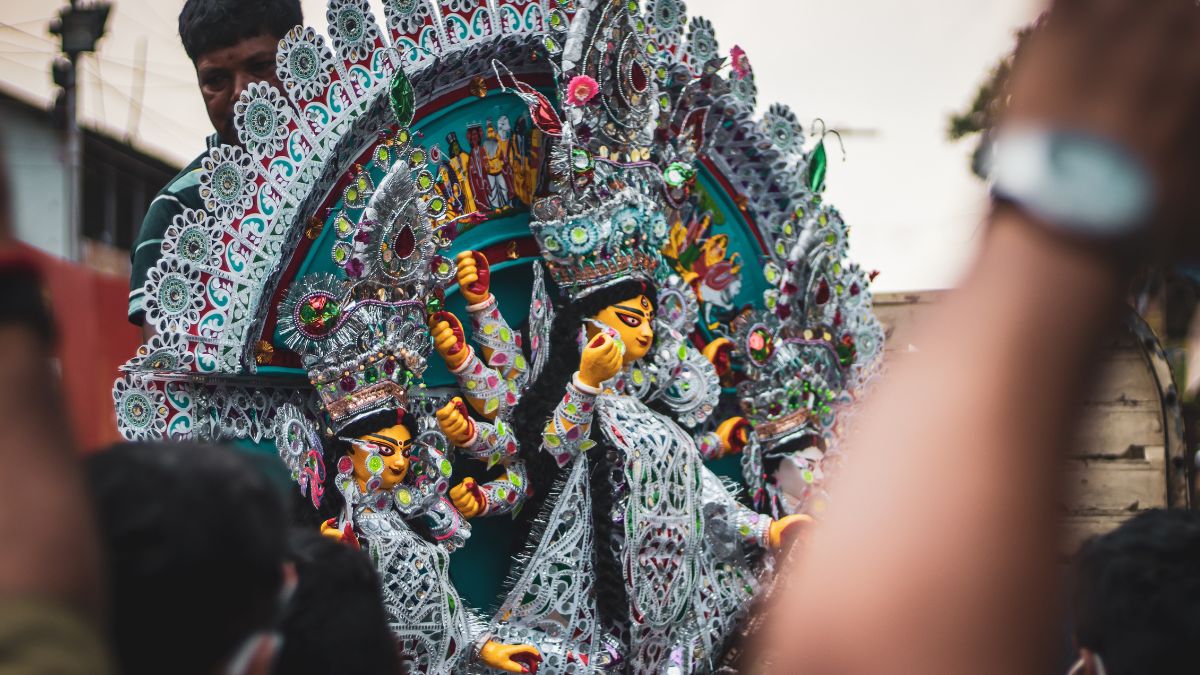Durga Puja in Assam is not just a religious festival but also a time for cultural bonding. Every October, the essence of Durga Puja unfolds. The roots of Durga Puja in Assam can be traced back to ancient times when the worship of the divine mother goddess was an integral part of the region’s culture.
Back To Ancient Days
The festival has evolved over the years, incorporating various local customs and traditions, making it unique to Assam. The tradition was further enriched during the rule of the Ahom dynasty. Earlier, archaeological excavations in Assam have uncovered sculptures of Shiva-Parvati, Dashmukha, Dashbhuja Durga, Singhabahini Durga, and other deities spanning from the ninth to the twelfth centuries. However, other archaeologists believe that the sculptures of Shiva and Durga discovered in various locations date back to the 7th century or earlier. Many of them believe that Durga Puja has been practised in Assam from before the 7th century based on this.
According to certain historians, around 1614 AD, Bali Narayan, the ruler of Darrang, worshipped Durga. When the two kingdoms’ relationship was established, the Ahoms learned about the worship of Durga and the earthen idol of the Koch kingdom.
The festival has evolved over the years, incorporating various local customs and traditions, making it unique to Assam. This amalgamation of cultures reflects the rich and diverse heritage of the state. During Durga Puja, the streets of Assam come alive with the spirit of celebration. The crisp, cool air with a slight chill, the hustle and bustle of people in the markets the light shows at night; and the entire atmosphere in the state is electrifying around Durga Puja.
ALso Read: Assam’s Biswanath Ghat Is India’s Best Tourism Village; Here’s What You Can Do Here
Durga Puja Celebration In Assam Now
Mahalaya (mohaloya, as the Assamese call it) signalled the start of Durga Puja. Back then, listening to Birendra Krishna Bhadra recite Chandipath on Doordarshan was a requirement.
With a little prayer ceremony called bel baran, the idols are placed at the puja mandap. Durga’s mother is represented as a solitary stem of a banana tree dressed in a red and white saree. This is put next to the Ganesha idol. The goddess and her offspring are honoured for three days — Saptami, Ashtami, and Navami — with chants, rituals, diyas, incense, and aarti.
Every neighbourhood in the city has a common place called naamghor, where older women from the neighbourhood gather in the evenings to sing bhajan-kirtan. Talking of puja bhog, nothing rivals the flavours served in puja pandals and temples. The bhog would consist of mixed vegetables, sweet tomato chutney, brinjal fry, kheer, dessert, or curd with the khichdi.
You would always find the city of Guwahati decked out with puja pandals with themes ranging from the strange to the inventive. When visiting the Durga Puja pandals in the northeastern city, don’t be shocked if you come upon some mythical planet or space-inspired pandals and more. What’s more fascinating is that in the past, when traffic in Guwahati wasn’t as severe as it is now, pandal hopping was easier and one could see how many they wanted!
The blending of traditions and the elaborate celebrations make it a unique and cherished event for both the residents of Assam and visitors from around the world. So, how are you celebrating Durga Puja?
Cover image credits: Canva

